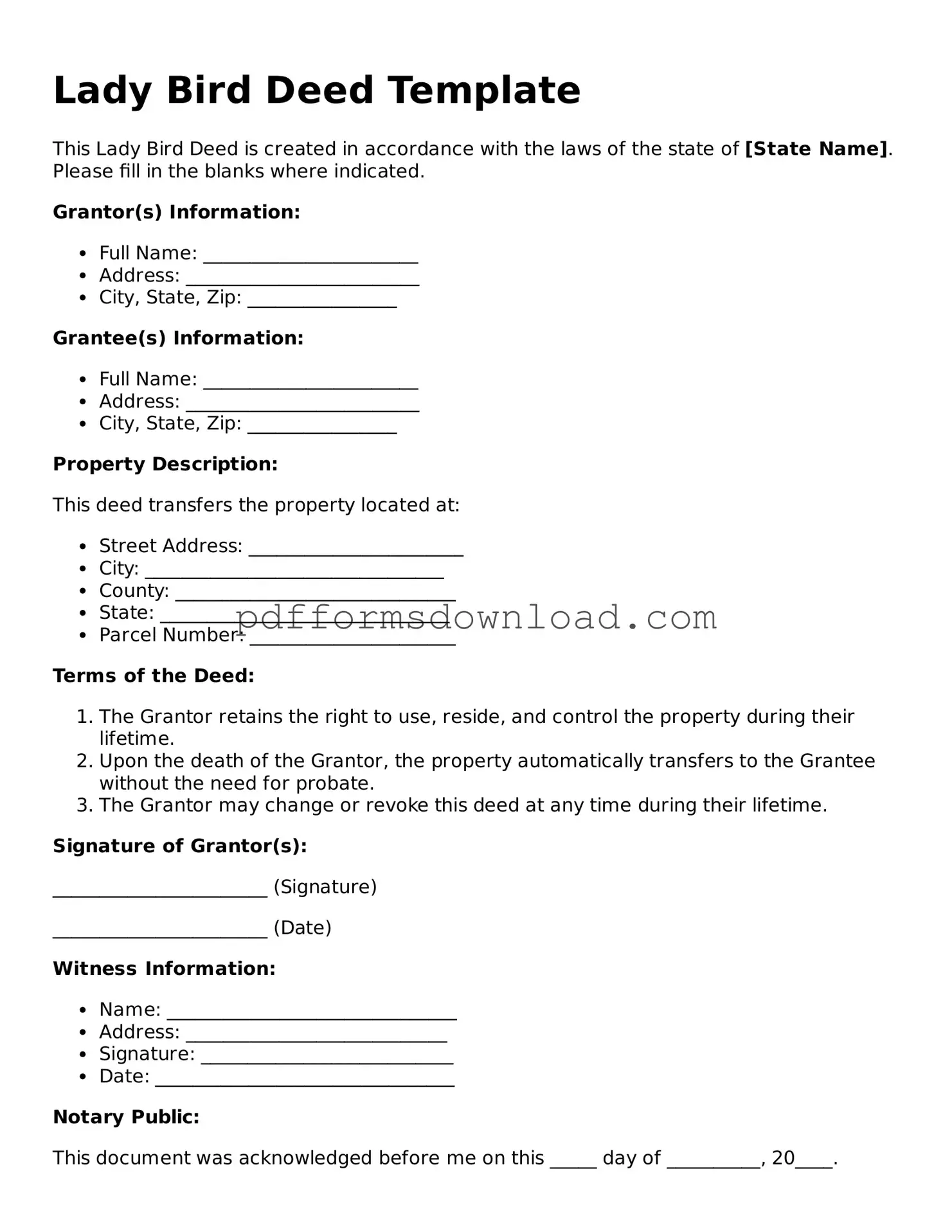What is a Lady Bird Deed?
A Lady Bird Deed, also known as an enhanced life estate deed, allows a property owner to transfer their property to beneficiaries while retaining the right to use and control the property during their lifetime. This type of deed ensures that the property bypasses probate upon the owner’s death, allowing for a smoother transition of ownership to the beneficiaries without the lengthy court process.
What are the benefits of using a Lady Bird Deed?
The primary benefits of a Lady Bird Deed include avoiding probate, maintaining control over the property during the owner’s lifetime, and potentially protecting the property from Medicaid estate recovery. Additionally, the property can be sold or mortgaged without the consent of the beneficiaries, providing flexibility for the owner.
Who can create a Lady Bird Deed?
Any property owner can create a Lady Bird Deed, provided they have the legal capacity to do so. This typically means the owner must be of legal age and mentally competent. It's advisable to consult with a legal professional to ensure that the deed is properly executed and complies with state laws.
Are there any tax implications associated with a Lady Bird Deed?
Generally, a Lady Bird Deed does not trigger immediate tax consequences for the property owner. However, the property may receive a step-up in basis upon the owner's death, which can reduce capital gains taxes for beneficiaries if they decide to sell the property. It is important to consult a tax advisor to understand the specific implications based on individual circumstances.
Can a Lady Bird Deed be revoked or changed?
Yes, a Lady Bird Deed can be revoked or modified at any time during the owner’s lifetime. This can be done by creating a new deed that explicitly revokes the previous one. It is essential to follow proper legal procedures to ensure that the changes are valid and recognized. Keeping records of any changes is also advisable for clarity and future reference.
